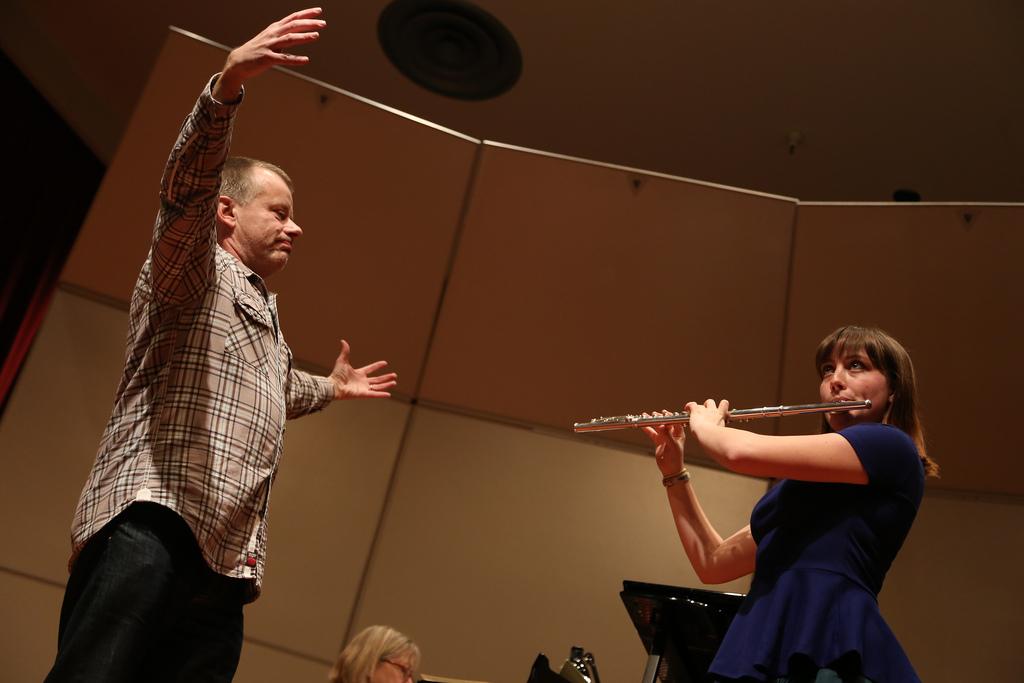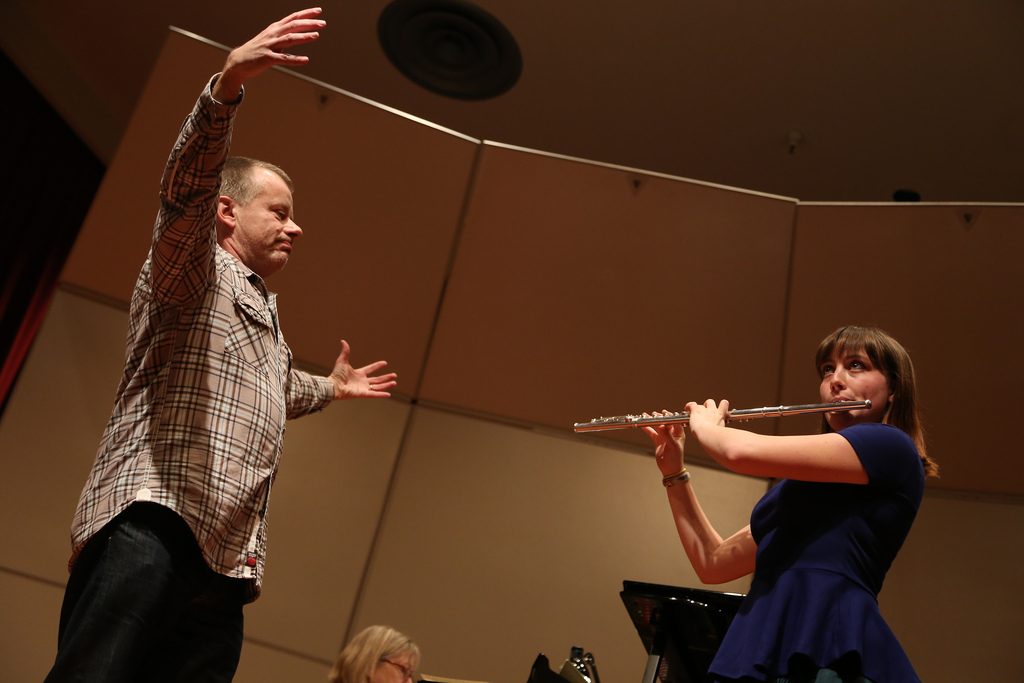[HTML1]
Performing chamber music is not an easy task. There is no conductor to guide each performer. There are no flashing, colored lights or visualizers to distract the audience. The artists must rely solely on the coalescence of their sound and active audience participation to ensure that the show goes smoothly.
In a city blooming with creativity and culture, SF State offers a chamber music series that is diverse in scope, appeals to students and is free of charge. The May Treat Morrison Chamber Music Center is located on the SF State campus and at nearly 60 years old, it is the longest running chamber music series in the history of the city.
Started in 1955 by Edward Hohfeld, the center aims to present an affordable and accessible way for the San Francisco community to enjoy chamber music.
Artistic Director Richard Festinger describes it as a presentation of “fantastic opportunities and great musicians that anyone can afford.”
The performances take place about once a month and feature a range of chamber music groups, including string quartets, piano trios, woodwind quintets and acapella choral ensembles.
Live music incorporates communication between musicians, dynamism and active listener participation, all of which are fundamental in chamber music, according to Marion Reinhard, the bassoonist of the Berlin Philharmonic Wind Quintet. The quintet is this month’s featured ensemble.
Chamber music is unique because it does not include a conductor, so communication between the musicians is paramount to ensure that the performance is cohesive, she said.
“The challenge of playing in a wind quintet is that the instruments are so different from each other,” said Reinhard. “The challenge is to find a common sound, to bring the instruments together, to melt the sound together. It’s also the fun part of it.”
 Michael Hasel, flute player for the Berlin Philharmonic Wind Quintet, instructs SF State student and flute player Abigail Green to breath deeper, connect with the audience, and have better posture during a Masterclass session in Knuth Hall in the Creative Arts building Friday Feb. 28. “You have all the tools in your toolbox, you just have to use them,” he said. Photo by Rachel Aston / Xpress
Michael Hasel, flute player for the Berlin Philharmonic Wind Quintet, instructs SF State student and flute player Abigail Green to breath deeper, connect with the audience, and have better posture during a Masterclass session in Knuth Hall in the Creative Arts building Friday Feb. 28. “You have all the tools in your toolbox, you just have to use them,” he said. Photo by Rachel Aston / Xpress
Established in 1988, the quintet also includes flutist Michael Hasel, oboist Andreas Wittmann, clarinetist Walter Seyfarth and Fergus McWilliam on the French horn.
Hohfield believed that by observing live performances and learning about the history, techniques and other insights into the world of chamber music, the audience would develop a deeper understanding and appreciation for it. Fifty-nine years later, the program still harbors this philosophy.
The series includes a performance in the McKenna Theatre in the Creative Arts Building, but also a two-hour master class where the ensembles work hands-on with music students at SF State, giving them professional insight to perfect their performance abilities. The class is held in Knuth Hall the day of the performance and is also free and open to the public.
Reinhard worked with bassoonist Kyoko Yamamonto, who is studying music education at SF State. Reinhard suggested that she try something new and play her instrument standing up, instead of sitting in a chair.
“What she was asking was very professional, to be spontaneous,” said Yamamonto. “And that’s something I really think is important to learn from someone like her. It’s something I will cherish for the rest of my life.”
Alyx Henderson, who is studying French horn performance at the San Francisco Conservatory of Music, said it was interesting to watch other music students perform.
“As performers we do the same things,” she said. “Whenever you are performing for a new audience, you might get nervous and shut down and take smaller breaths, so I can relate that to what I do.”
The quintet performed for a packed house, transforming a theatre that many SF State students have only known as the setting for their 400-person GE classes, into a venue with profound aesthetic and aural grandeur.
According to a review in The Australian, the quintet is “remarkable for their cohesiveness, timbral balance and idiomatic playing across a range of styles.” The Manchester Evening News deems them “arguably the best ensemble of its kind in the world.”
“The melody, the coherence that they were able to bring along was definitely not expected,” said Robby Cordell, a classics major at SF State. “It was really beautiful, truly well done.”
The next performance of the Morrison Artists Series will be Brentano String Quartet with Hsin-Yun Huang on April 4.
[set_id=72157641837731984]








